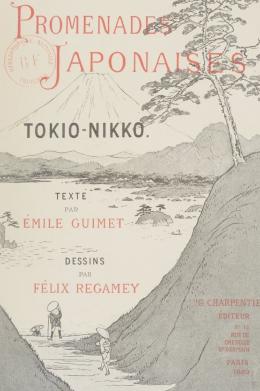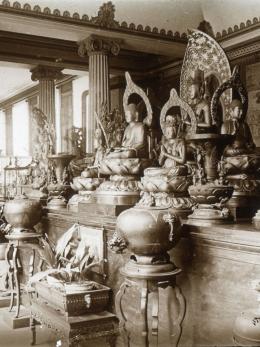埃米尔·吉美一生大事记
在他非凡的一生中,埃米尔·吉美游历世界,收集了众多世界上最精美的亚洲艺术品。他创建自己的博物馆,也正是为了与同时代的人分享他对东方文化和宗教的迷恋。
1836年6月2日

出生
出生于里昂一个富庶的实业家庭。其父让·巴蒂斯特·吉美(Jean-Baptiste Guimet)发明了“吉美蓝”。
1865年-1866年

初游埃及
埃米尔·吉美开始收集埃及文物,于1867年发表《埃及素描:游客随笔》。
1876年-1877年

探索亚洲
他在费利克斯·雷加梅(Félix Régamey)陪同下开始了环球旅行,在参观费城的万国博览会后,经美国抵达日本,之后前往印度。
1878年-1880年

日本漫步
出版两卷游记:《日本漫步》(Promenades japonaises)《日本漫步之东京-日光》(Promenades japonaise Tokyo-Nikko)。
1879年

创建里昂吉美博物馆
埃米尔·吉美有意在里昂创建一所东方语言学校和一座“宗教博物馆”,前者以失败告终。1879年,儒勒·费里(Jules Ferry)为这座仅部分完工的博物馆举行了落成典礼。
1889年

博物馆迁址至巴黎
为了在巴黎建造一座与里昂吉美博物馆一样的博物馆,埃米尔·吉美将个人收藏悉数捐赠给国家,本人负责博物馆的运营管理。该馆收藏来自亚洲、埃及、古希腊-拉丁文明,以及来自美洲印第安文明的文物。
1918年10月2日

去世与遗产
埃米尔·吉美在创建了两座博物馆、促成了众多艺术品捐赠,并主持多次考古发掘之后辞世。
